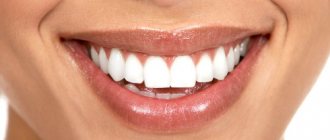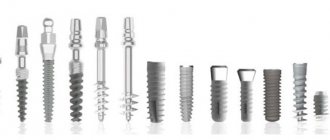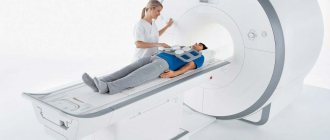Dentists are one of the few doctors whose visits patients prefer to postpone. Therefore, treatment of advanced caries is not uncommon. If the tooth is severely involved, it is usually necessary to remove the nerve. For this purpose, arsenic-based paste is used. Sometimes even after all the manipulations, the toothache does not go away. We will look into the reasons for this condition in today’s article.
When is it necessary to remove a nerve?
Dentists are trying their best to save the tooth, but, unfortunately, this is not always possible. For example, in case of extensive caries, it is necessary to resort to removing the nerve of the tooth. The nerve (pulp) is responsible for the sensitivity of the unit. Pain and other unpleasant symptoms arise precisely because of inflammation of the pulp. The following conditions are considered the main indications:
- Advanced periodontitis.
- Deep caries affecting the internal tissues of the tooth.
- Acute pulpitis.
Also, this manipulation is indicated in cases where crowns, bridges, veneers and other fixed prostheses are to be installed. First of all, this is done with the intention that the tooth does not get sick under the artificial structure. In this case, the unit is considered dead, but continues to perform its functional duties.
Possible side effects
Arsenic is placed in the tooth so that it deadens the nerve. But its action can cause complications. How dangerous is this? If you consult an experienced doctor who will use not pure poison, but its derivative, there is nothing to worry about. The paste is placed deeply and sealed on top, so it does not enter the stomach. High doses of the substance and its untimely removal are harmful. In this case, there is a risk of inflammation, periostitis, periodontitis. Continuing to walk with poison longer than prescribed is dangerous! After all, prolonged contact with tissues poisons the body. Untimely removal and excessive dose cause:
- Darkening of dentin;
- Inflammation of the tissues surrounding the unit;
- Pulp swelling, pulpitis;
- Necrosis of bone tissue and periosteum;
- General intoxication; poisoning of the body.
Sometimes it happens that the pain becomes stronger and becomes tearing. This happens when the dose of the substance is too small or the threshold of vulnerability is high, as well as with necrosis of the periosteum and individual intolerance.
How does arsenic remove a nerve?
Note that removing pulp using arsenic is an outdated technique. Most often it is practiced in public clinics. First, the patient is sent for an x-ray, then the tooth is processed with a drill and unimpeded access to the nerve of the tooth is created. Next, an arsenic-based paste is placed into the formed bed, and a temporary filling is placed on top. As a rule, it is removed after 1-3 days. After the filling is removed, the canals are cleaned, then a permanent filling is fixed.
Arsenic during pregnancy and in pediatric dentistry
Often, tooth root removal is required for pregnant women or children. During pregnancy and the appearance of milk units, the paste is used very rarely.
- Firstly, the issue of the effect of toxins on the delicate roots of temporary teeth and the embryo has not been sufficiently studied.
- Secondly, it is difficult to correctly calculate the tiny dose for children.
- Thirdly, a child may accidentally swallow the fallen paste.
Therefore, the substance is used only as a last resort when the patient is allergic to anesthesia. Due to high risks, the toxic substance is replaced with a safe one. When the pediatric dentist is forced to use the paste, its action time is reduced to a minimum. In other cases, alternative pulp necrotization technologies are used.
Does it hurt?
In most cases, the process of pulp necrosis using arsenic is painless. This is due to the pain-relieving components that are present in the arsenic paste. Sometimes patients complain of moderate pain, and this is normal. If you are experiencing severe pain, we recommend that you immediately visit the dentist.
Significant pain is possible if the dentist violated the rules for performing this procedure, for example, put too little arsenic.
Ways to eliminate pain
The pain is usually mild in nature and manifests itself upon contact with heat or mechanical action (chewing). To suppress the syndrome, it is recommended to use painkillers in the dosage prescribed by the doctor.
If the symptom does not disappear, then you must again seek help from the dentist before the end of the allotted period. Also, medical intervention will be required in case of intoxication of the body, change in the color of the enamel and swelling of the gums.
You can extract arsenic paste yourself. To do this, you should prepare a clean, pre-disinfected needle or tweezers, with the help of which the temporary filling is removed.
In the opened cavity there is a gray paste. It must be removed in one go, without swallowing.
Pain after applying arsenic is a normal phenomenon that goes away on its own over time. In other cases, when the discomfort does not disappear, you need to contact your dentist to remove the toxic paste.
Further recommendations
When arsenic is present, the following rules must be followed:
- It is not recommended to use painkillers.
- Do not try to heat the tooth, even if it hurts. Such measures can lead to complications.
- For three hours after the temporary filling is installed, try to refrain from eating and drinking.
- Do not rinse your mouth.
If the doctor claims that it is necessary to resort to the removal of the dental nerve, there is no need to panic or refuse this procedure. If this is not done in a timely manner,
the tooth
removed completely. Even after depulpation, the tooth will last for many years.
Indications and contraindications
The paste is used in cases where it is impossible to use modernly produced anesthetics. Such situations occur in certain indications:
- The patient is allergic to other anesthetics;
- If you need to urgently kill nerve fibers and remove a molar;
- When the patient cannot tolerate anesthesia for health reasons;
- Urgent treatment of patients with acute pain;
- Treatment of incisors, canines, molars in childhood when it is impossible to use local anesthesia;
Of course, like every drug, the paste has contraindications. The doctor must take them into account.
- It is impossible to put mass into a pathological tooth if the patient is under two years old.
- Keeping the paste is not allowed in case of chronic kidney disease or prostate disease.
- If the tooth canals are curvature, another remedy is used.
- The paste is not used at the moment of resorption of the roots of the chewing organs.
- This method is not used for glaucoma and allergies to components.
What to do if a tooth hurts under a crown
Severe toothache sometimes appears at the wrong time: at work or at night. In this case, there is no way to immediately contact a dentist. What to do if a tooth hurts under a crown, how to remove it and is it possible to do this? You can relieve pain using medications with analgesic properties or folk remedies.
Remember that it is necessary to temporarily relieve pain, but this does not cancel a visit to the doctor. In addition, you need to remember the maximum daily dose of the drug taken - it is indicated in the instructions for it.
Medications
Medicines from the group of non-steroidal anti-inflammatory drugs (NSAIDs) are very helpful. If you do not have diseases of the gastrointestinal tract (especially ulcerative processes in the gastrointestinal tract), then you can use one of the following remedies:
- Ketorol – 1 tablet 10 mg;
- Diclofenac – 1 rectal suppository 100 mg;
- Nurofen – 1 tablet 200 mg.
These agents suppress the action of biologically active substances that cause inflammation and pain, and also protect the gastrointestinal mucosa from any influences. They will relieve pain, but will cause an exacerbation of the ulcerative process in the gastrointestinal tract. Therefore, for people suffering from gastric ulcers, it is better to take nimesulide (trade name Nise) - 1 tablet of 100 mg. Nise belongs to the latest generation of NSAIDs and does not have a negative effect on the gastrointestinal tract.
Folk remedies
What to do when a tooth hurts under a crown, but you don’t have the necessary tablets at hand? It is worth turning to people's experience. Sometimes folk remedies help as well as drug therapy. Take:
- a piece of salted (but not smoked!) lard and place it on the gum next to the sore spot; salted lard will draw out fluid, eliminate swelling and pain; the effect occurs within 10 – 15 minutes;
- finely grate onion and garlic in equal volumes, mix the same amount of salt, place in a linen napkin and apply to the gum; will also quickly relieve pain, but will also destroy the infection;
- a teaspoon of baking soda per glass of boiled water and rinse every 15 minutes; baking soda will remove inflammatory products and bacteria, clean the cavity inside the prosthesis (if it has a gap) and soothe the pain.
Read more about how to safely and effectively relieve toothache before visiting the dentist in our article.
What not to do
There are things that you should not do when a tooth hurts under a crown. This:
- Any warming procedures will not soothe, but will increase pain, and will also significantly increase the risk of complications, since the cause of tooth pain under the crown can be a purulent-inflammatory process; when heated (compress, heating pad applied to the sore spot), the blood vessels dilate and pus can spread through them to other organs and systems;
- Self-administration of antibiotics - they will not relieve pain, but can cause side effects; Only a doctor can prescribe antibiotics;
- Lie without a pillow - the head should be elevated - this ensures the outflow of blood and reduces swelling;
- Attempting to cure a tooth on your own - only a dentist can help.
Tolerate or not pain in a tooth with a crown
Preliminary treatment before prosthetics is always accompanied by trauma to the periodontal tissues. Therefore, after installation of the prosthesis, injured tissues may hurt for some time. But this is not an intense pain that gradually subsides. Depending on the sensitivity of the patient, it can last from 1 to 7 days.
The cause of tooth pain under the crown may be completely different - it is an inflammatory process or an incorrectly installed prosthesis. The pain will be of a completely different nature. The characteristics of pain allow the dentist to assume the presence of a particular pathology.
Pain when pressed or bitten
When a tooth under the crown hurts when you press (bite), you should pay attention to other symptoms, such as swelling of the gums, discharge of pus from under the crown, bad breath, and increased body temperature. But sometimes, apart from pain when biting, nothing else bothers the patient.
- Possible reasons: most often the tooth under the crown hurts when pressed due to the inflammatory process in the area of the apex of the tooth root. An acute inflammatory process can be purulent in nature. In this case, pus may be released from under the crown (abscess at the root apex). With a long-term inflammatory process, a granuloma or cyst forms in this area. In the absence of signs of inflammation, pain when pressed indicates an incorrectly installed prosthesis. It may be slightly longer than adjacent natural crowns, which leads to increased stress and injury to the periodontal tissues.
- What is the best way to relieve pain: any drug from the NSAID group will do - Ibuprofen, Diclofenac, Ketonal, etc. But this is not a way out, but simply temporary self-help. To fix the problem, you need to urgently contact your dentist.
Pain under the crown from hot
With a properly installed denture, the tissues should not react to hot food. The pain under the dental crown from hot heat is acute and does not go away immediately. If you do not see a doctor in time, then over time it will become longer and more exhausting.
- Possible causes: pain under dental crowns from hot temperatures is a sign of pulpitis. It develops in a “living” tooth or in a pulpless tooth when the pulp is not completely removed.
- What is the best way to relieve pain: the pain with pulpitis is very strong, it is not so easy to calm it down, you need to urgently run to the dentist. Before leaving home, you need to rinse your mouth with a 2% soda solution and take a Ketorol tablet - this is the most effective pain reliever from the NSAID group.
Tooth pain from hot food
Pain under temporary crown
A temporary prosthesis is installed during the production of a permanent one in order to protect the prepared tooth from injury. They are made from plastic or metal-plastic. Sometimes wearing a temporary prosthesis is accompanied by aching pain. Painful sensations may be accompanied by swelling and redness of the gums.
- Possible reasons: temporary structures made from cheap materials do not always adhere tightly to natural dental tissues, so infection can get underneath them and secondary caries can develop. Acrylic dentures often cause allergies and have a toxic effect on tissue.
- What is the best way to relieve pain: treat the oral cavity with an infusion of chamomile or calendula (a tablespoon of raw material per glass of boiling water), take any NSAID tablet and an antihistamine (Zodak, Erius, Claritin) and visit a doctor; the denture may have to be replaced.
The tooth under the crown hurts and the gums/cheek are swollen
First, a small convex formation appears above the installed structure. If left untreated, the swelling increases and spreads to the entire affected half of the face, accompanied by severe pain.
- Possible reasons: if the tooth under the crown hurts and the cheek is swollen, this is a sign of periostitis (flux) - inflammation of the periosteum of the jaw bone. The reason is poor quality treatment before prosthetics.
- What is the best way to relieve pain: rinse with any antiseptic, take NSAIDs and antihistamines, immediately consult a dentist.
A tooth without a nerve hurts under the crown
After installation of the prosthesis, pain may appear in the “dead” pulpless unit. If a tooth hurts, but the intensity of the pain gradually decreases, then there is no need to worry - this is normal. Sometimes the pain does not appear immediately, but after a while its intensity increases and takes on a pulsating character. Patients are often perplexed: why does the tooth under the crown hurt if its nerve has been removed?
- Possible causes: moderate pain that appears immediately after prosthetics - this is usually the result of trauma to the periodontal tissues. They last for several days and go away on their own. A “dead” tooth hurts under the crown also when depulpation was performed poorly, when particles of pulp remained in the dental cavity or root canals, they became infected and pulpitis or periodontitis developed.
- What is the best way to relieve pain: minor pain after prosthetics does not require pain relief. The mouth can be rinsed with a 2% soda solution or an infusion of herbs with antiseptic properties (sage, calendula). If there is severe, growing throbbing pain, you can temporarily remove it by taking a Diclofenac or Nise tablet and contact your dentist.
It's a dull pain
An exhausting, aching pain syndrome may appear immediately or some time after prosthetics.
- Possible reasons: this is typical for various pathologies in the area of the apex of the tooth root - granulomas, cysts and abscesses. They are a consequence of defects in cleaning and filling of root canals. An acute or chronic inflammatory process develops, accompanied by aching, wave-like pain.
- What is the best way to relieve pain: it is difficult to independently relieve tooth pain under the crown if it is intensely aching, but to alleviate the condition before visiting the dentist, you can take any medicine from the NSAID group.
More information on the topic
When they use arsenic and why, you will learn even more in the articles:
- Deep caries
- Treatment of periodontitis
- Dental prosthetics
References for the article:
- Kostina I.N., Nikolaeva A.A. “Arsenic necrosis of the jaw - complications in the treatment of dental pulpitis” // “Problems of Dentistry” No. 3, 2010.
- "Endodontics. Pulp diseases" // Textbook / A.S. Opravin et al. – Arkhangelsk: Publishing House of the Northern State Medical University, 2021.
Author of the article: Victoria Igorevna Nikitina
Staff copywriter of the portal Stom-Firms.ru Author specializing in medical texts











